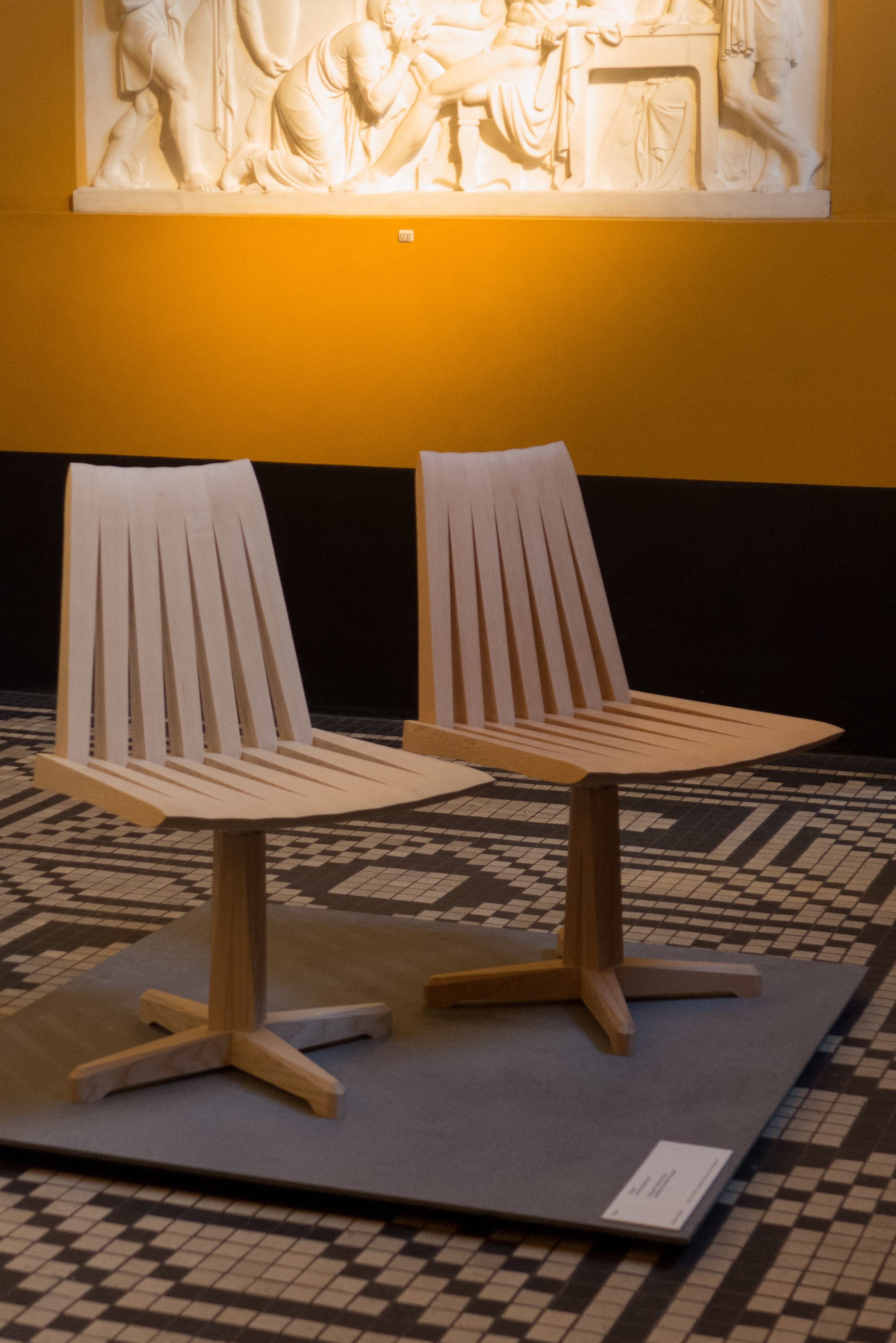Piqué by Hannes Stephensen
/It's always interesting to see how a design evolved … if possible to see how a designer tried and then rejected certain options to reach the final form for a design. It's part of that same process when you see designers, having reached one stage, then pick up an idea and take it on to develop a variation.
For the Cabinetmakers' Autumn Exhibition in 2017 - when the theme was Side by Side Out Side - Hannes Stephensen designed a pair of seats that were set on a hefty base like a low bench. With the title Flette Fingre, these seats had a distinct form with an L shape of tapered or wedge-shaped forming a seat and a backrest - a shape, as the name indicates, like interlocking your finger tips and holding your palms at right angles to each other - and this seat unit was held on a complicated but almost completely hidden steel pivot so the chairs, although they were fixed on a common base, could be twisted round so people could face each other to talk or tuern away from each other.
That pair of seats was made by Kristian Frandsen and this year the same partnership has taken the same form of chair but made slightly smaller and they have developed the design and taken it on to a next stage by separating the chairs and setting each on its own cross-shaped base in wood and a short column that supports the metal pivot and the seat to make a stand-alone chair. With the title Piqué, the idea of a pair of chairs has been kept but one chair is in Oregon Pine and one in ash. In 2017, both the chairs were in oak.
Piqué
MONO catalogue number 25
designed by: Hannes Stephensen
produced by: Snedkersind v/Kristian Frandsen
Et stk. i ask, et stk. i oregonpine / One in ash, one in oregon pine
height: 80
width: 50
depth: 50 cm
Flette Fingre designed by Hannes Stephensen and made by Kristian Frandsen
shown at the Cabinetmakers’ Autumn Exhibition in 2017 at Designmuseum Danmark
note:
Side by Side was for furniture outside … the idea of that theme for the Cabinetmakers’ Exhibition was to design furniture that encouraged people to sit and talk. The exhibition was in the great inner courtyard of Designmuseum Danmark in Copenhagen and, as part of the exhibition, and developing that idea of conversation, the museum showed a number of filmed interviews with the designers and the cabinetmakers. The conversation between Hannes Stephensen and Kristian Frandsen was a revelation because it showed how their common enthusiasm and their obvious and very real passion for craftsmanship in wood drove forward the project.
The design museum regularly uses films and video … both historic and contemporary … to illuminate aspects of the collection or the works of specific designers … the current show of design since 2000 in Dansk Design Nu is a particularly good example. It is to be hoped that these will be shown more widely if the museum can establish something comparable to the Louisiana Channel, the on-line site by Louisiana Museum of Modern Art.







































